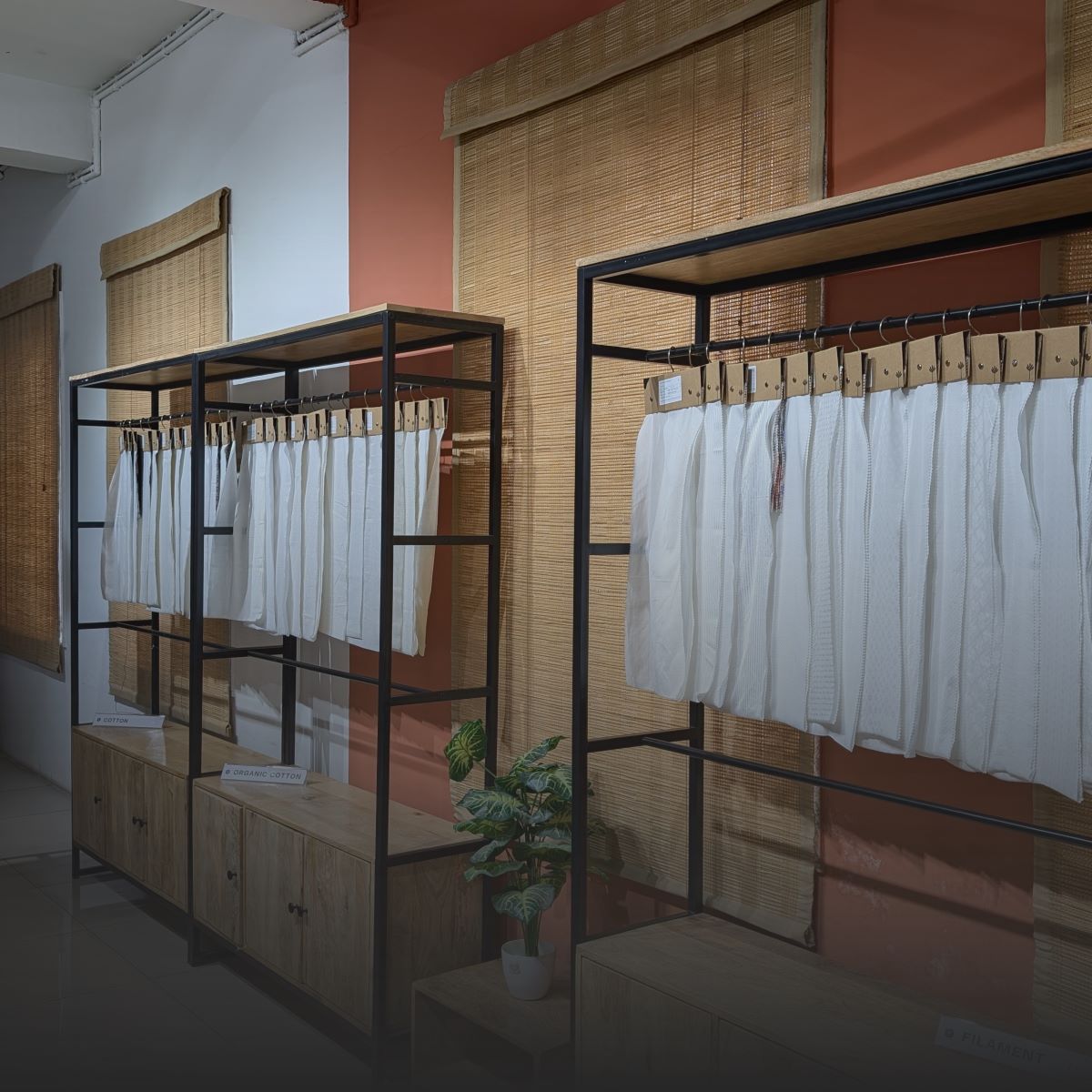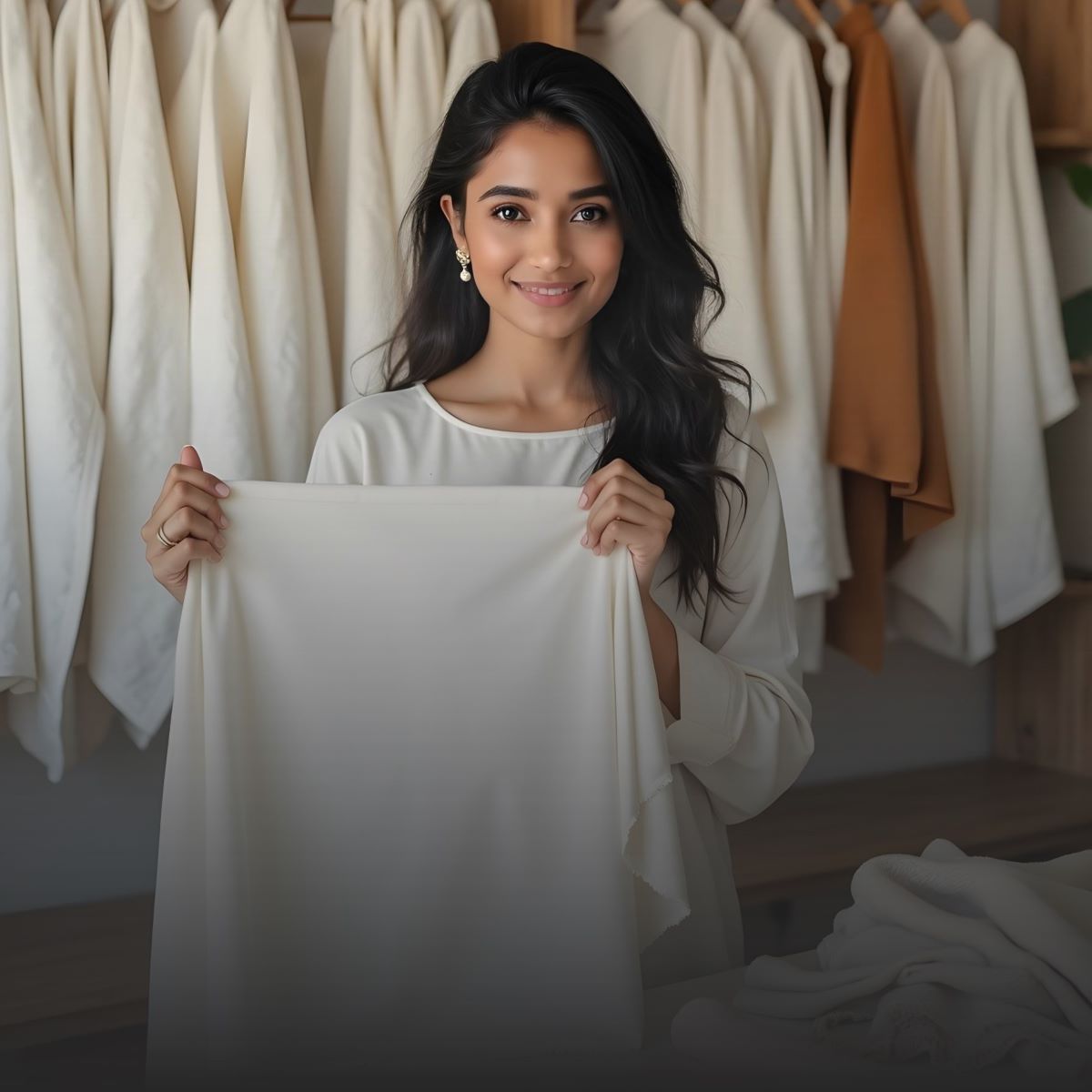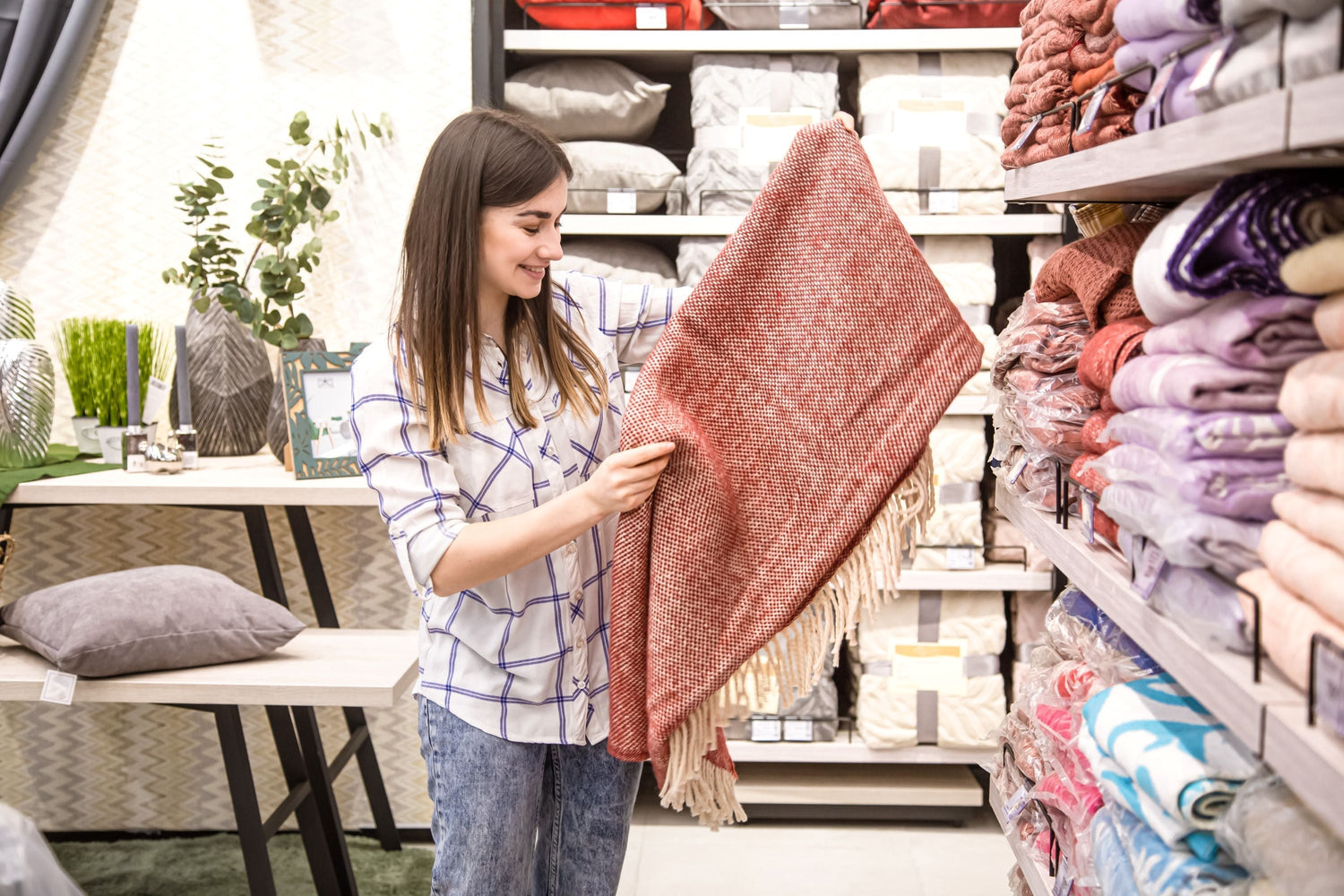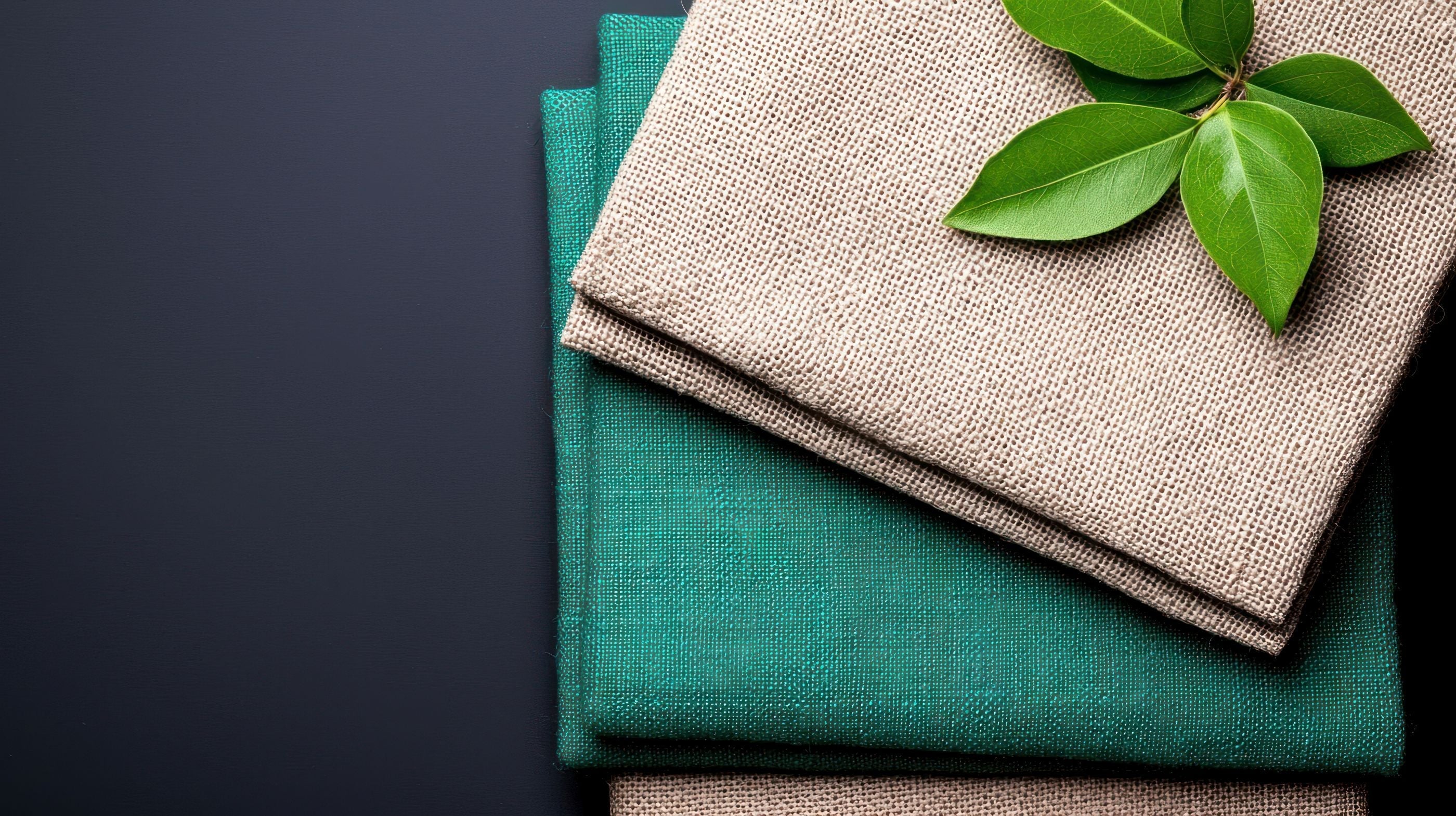Eastern Europe is becoming a significant textile sourcing hub as global fashion brands deal with new sustainability regulations, supply chain issues, and changing consumer tastes. This area is close to important Western markets, has a history of sustainability, and is building up its digital infrastructure. These factors make it a great choice for brands seeking trustworthy, moral, and adaptable supply chains.
This article helps fashion brands navigate Eastern Europe's fabric sourcing landscape using industry data, regional strengths, and practical steps.
Gain actionable insights to streamline procurement by understanding top-sourcing regions, certified fabrics, and tech-enabled platforms like Fabriclore.
This guide helps startups and established brands source smarter, faster, and more sustainable.

The Global Textile Sourcing Shift: Key Stats For 2025
Sourcing patterns are evolving rapidly. Here's what the data says:
- Nearshoring is accelerating: Brands are moving production closer to home to cut down on lead times and get a better handle on the supply chain.
- The global textile market is booming: It is expected that the textile business will grow at a rate of 7.35 per cent per year, going from $2.12 trillion in 2025 to $4.02 trillion by 2034.
- Trade disruptions are rising: Trade barriers have grown five times since 2015, and in 2023, 3,000+ new barriers will be put up around the world.
- US apparel import slowdown: Early in 2025, imports only grew by 3.2% in value, which shows that brands are moving away from being too dependent on Asia.
- Eco-regulation tightening: Brands are changing how they choose suppliers because of the EU's Ecodesign for Sustainable Products Regulation (ESPR) and the Corporate Sustainability Reporting Directive (CSRD).
Because of these things, fashion companies around the world are looking into agile, ethical, and proximity-based sourcing, which makes Eastern Europe a more appealing place to visit.
Why Eastern Europe Is Gaining Global Attention
As global fashion supply chains become more complex and sustainability regulations tighten, brands are rethinking fabric sourcing. Eastern Europe has become a strategic region with the right mix of proximity, quality, agility, and ethics.
Established and emerging fashion brands are flocking to the region due to its strong manufacturing infrastructure, growing access to certified sustainable materials, and rising digital adoption. Eastern Europe is becoming a preferred sourcing destination because:
1. Strategic Nearshoring for Lower Risk
- Proximity to Western hubs like Paris, Berlin, Milan, and London.
- Lower logistics costs and carbon emissions.
- Faster response to demand shifts and market changes.
2. Sustainability and Certifications
Eastern European manufacturers increasingly offer:
- GOTS-certified organic cotton.
- OEKO-TEX® compliant textiles.
- Recycled polyester, TENCEL™, and circular blends.
- Alignment with EU sustainability frameworks (ESPR, CSRD).
3. Digitally Enabled and Agile
Suppliers across Poland, Romania, and Bulgaria are adopting:
- Automated weaving and cutting.
- Waterless and CO₂ dyeing.
- Real-time inventory and production tracking.
- Digital sampling and virtual sourcing platforms.
Ryzeal Sourcing's 2025 report says that digital transformation is now a top priority for mills in the region. This will help them cut down on waste and get new products to market faster.
4. Competitive Quality-to-Cost Ratio
- Skilled craftsmanship and reasonable pricing are both found in Eastern Europe.
- Perfect for new designers, niche labels, and retailers who want high quality without paying Italian prices.
What Types of Fabrics Are Commonly Sourced Here?
|
Fabric Type |
Popular Uses |
Regions Known For |
|
Premium Linen |
Dresses, home décor, casual wear |
Lithuania, Poland |
|
Organic Cotton |
Basics, babywear, eco collections |
Romania, Bulgaria |
|
Circular Blends |
Ethical fashion, sustainable lines |
Czech Republic, Bulgaria |
|
Technical Textiles |
Sportswear, outerwear |
Poland, Hungary |
|
Smart & Recycled Yarns |
Streetwear, fashion-forward collections |
Romania, Czechia |
|
Hemp & Bamboo Blends |
Sustainable fashion, innerwear |
Bulgaria, Hungary |
Where to Source: Top Textile Regions in Eastern Europe
|
Country |
Textile Specialties |
|
Poland |
Organic cotton, digital prints, technical textiles |
|
Romania |
Circular knits, denim, garment stitching & finishing |
|
Bulgaria |
Hemp, linen, OEKO-TEX® certified small-batch fabrics |
|
Czech Republic |
Smart fabrics, innovation in recycled blends |
|
Hungary |
High-quality synthetic-natural blends, legacy craftsmanship |
|
Lithuania |
Premium linen, heritage spinning mills, GOTS-certified partners |
Step-By-Step: How To Source Fabrics In Eastern Europe

It takes careful planning to get textiles from Eastern Europe or to make things in that area. This is especially true as standards for sustainability get stricter and speed-to-market becomes more critical. Here is a simplified guide to help global fashion brands speed up the process, from choosing the right fabric to finding a trustworthy partner in the supply chain.
1. Define Your Fabric Requirements
Make it clear what you need before you contact suppliers. This not only saves time but also makes sure that the product fits with your brand's goals.
- Fabric composition (e.g., cotton, bamboo, hemp, blends).
- Weight, weave, GSM, and intended usage.
- Required certifications (e.g., GOTS, OEKO-TEX®, Bluesign).
- MOQ expectations, sampling needs, and lead times.
- Delivery deadlines and shipping destination.
2. Use Digital Platforms To Simplify Sourcing From Verified Suppliers
Getting supplies from different mills or suppliers that you haven't checked out could lead to delays, problems with compliance, or quality that isn't consistent. Fashion businesses in Eastern Europe are increasingly using 'tech-enabled fabric sourcing platforms' like 'Fabriclore' to make things easier by linking buyers with verified, certified mills in India.
Fabriclore connects you to a dependable and budget-friendly supply chain designed for Eastern European production requirements. If you're in Poland, Romania, the Czech Republic, Hungary, Ukraine, or the Balkans, the platform provides:
Why Eastern European Buyers Choose Fabriclore:
Sustainable Fabric Choices
- You can choose from GOTS-certified organic cotton, TENCEL™, bamboo, hemp, LENZING™, LIVA™, BEMBERG™ Cupro, and recycled blends. These materials are perfect for meeting EU green rules like ESPR and CSRD.
Expert Customization Options
- With more than 10 years of in-house experience in digital, screen, and hand-block printing, brands can quickly customise designs and be sure that the colours will be correct and the production will be consistent.
Flexible Fabric Formats
- Choose from:
- RFD (Ready for Dyeing) and greige.
- Pre-dyed fabrics like yarn-dyed, Schiffli, and denim.
- Made-to-order textiles in your preferred finish.
- Ready stock of woven, printed, and artisanal designs like Ikat, jacquard, and tweed.
Low MOQ Flexibility
- With MOQs starting at just 10 meters, Fabriclore supports small-batch production. This lets fashion startups and custom brands try out new designs without having to buy too much.
Transparent Sourcing
- There are no surprises when you get the fabric because each listing includes full details like construction, weave, yarn count, and fold length.
Reliable Delivery Across Eastern Europe
- Fabriclore offers doorstep delivery, export paperwork, and real-time order tracking because its logistics are all bundled together. What they offer is:
- Key delivery regions:
- Eastern & Central Europe: Poland, Romania, Hungary, Czech Republic, Slovakia, Slovenia, Croatia, Bulgaria, Latvia, Lithuania, Estonia, Cyprus, Greece, Ireland, Belarus
- Balkans & Central Asia: Bosnia & Herzegovina, Serbia, Montenegro, North Macedonia, Albania, Kosovo, Armenia, Azerbaijan, Kazakhstan
- Expanding zones: Moldova, Ukraine, and Russia
3. Request Swatches & Verify Certifications
Before you confirm your order, you need to make sure the quality is good and that it is eco-friendly.
- Request fabric swatches or lab dips.
- Review technical specifications and test results (GSM, shrinkage, colourfastness).
- Ask for digital copies of relevant certificates (e.g., GOTS, OEKO-TEX®, Bluesign).
4. Audit Production Standards
Sustainable sourcing isn't just about fabric; it also includes how things are made. Make sure that the person you choose to be your partner acts in a way that is good for the environment and people.
- Evaluate clean energy adoption and carbon footprint.
- Check for fair labour practices and workplace safety compliance.
- Review wastewater treatment processes and chemical management.
Tip: If it's not possible to do an audit in person, choose third-party virtual audits or trusted sourcing platforms that check out suppliers ahead of time.
5. Negotiate Long-Term, Transparent Partnerships
A good strategy for getting fabric isn't just about placing one-time orders. Over time, consistency, scalability, and cost control are all made possible by building strong relationships with dependable suppliers.
- Clarify lead times, sampling processes, and reordering procedures.
- Agree on performance benchmarks (e.g., delivery, defect rates, compliance).
- Foster flexibility to accommodate seasonal or trend-based product changes.
- Discuss future sustainability goals and alignment with EU frameworks.
Start Sourcing Smarter With Fabriclore
Fabriclore offers the tools, fabrics, and support to help your brand grow with confidence, whether you're making basic clothes out of organic cotton in Romania, linen for a Baltic capsule collection, or prototypes of small-batch eco-wear in Hungary.
Explore our certified collections, request swatches, or connect with a sourcing expert at
Final Tips For Global Fashion Brands
- Align with EU Compliance: Work with mills already aligned with ESPR and CSRD.
- Choose Tech-First Platforms: Digital-first partners like Fabriclore save time and ensure traceability.
- Don't Ignore Small Batches: Eastern Europe's low-MOQ sourcing lets you test designs quickly.
- Focus on Ethical + Agile Supply Chains: That's the competitive edge for 2025 and beyond.
Conclusion: Why Eastern Europe Is The Future Of Fabric Sourcing
As fashion brands move towards sustainable, transparent, and quicker supply chains, Eastern Europe has become a strong sourcing hub. Its strategic location near major Western markets, strong manufacturing capabilities, and growing focus on eco-friendly practices make it ideal for large-scale and boutique fashion production.
Brands aiming to reduce lead times, meet EU regulations such as ESPR and CSRD, and find high-quality fabrics with low minimum order quantities will find Eastern Europe to be an ideal choice, blending innovation, ethics, and efficiency.
Digital sourcing platforms like Fabriclore make this opportunity easier than ever. Fabriclore helps fashion companies find good fabrics by putting buyers from Eastern Europe in touch with approved Indian mills. Delivery is reliable, customization is possible, and the process of getting is clear.
FAQs
1. Why Is Eastern Europe Becoming A Top Textile-Sourcing Destination?
Eastern Europe is a better option than sourcing from Asia because it is close to major fashion markets, shipping emissions are lower, turnaround times are faster, and eco-certified fabrics are available.
2. Can Small Or Emerging Fashion Brands Source From Eastern Europe?
Yes! A lot of local suppliers now offer low minimum order quantities (as low as 10–50 meters), which is excellent for small-scale collections, samples, or making custom clothes. This is made even easier by platforms like Fabriclore that offer flexible ways to source materials.
3. What Types Of Fabrics Are Commonly Sourced In This Region?
Popular fabrics sourced from Eastern Europe include:
- GOTS-certified organic cotton.
- Premium Baltic linen.
- Hemp and bamboo blends.
- Circular and recycled poly fabrics.
- Technical textiles for activewear and outerwear.
4. How Can I Ensure The Fabrics Meet Sustainability And Compliance Standards?
Always ask for certifications from a third party, such as Bluesign, GOTS, or OEKO-TEX®. Platforms you can trust, like Fabriclore, check all of their mill partners ahead of time and give you digital certificates, lab dips and test reports before you finalise any order.
5. Is Sourcing Through Digital Platforms Reliable For Eastern European Markets?
Of course. Digital sourcing platforms like Fabriclore offer end-to-end support, which means they help with everything from choosing fabrics and asking for swatches to managing logistics and making sure orders are delivered on time in Poland, Romania, Hungary, Bulgaria, Czech Republic, and other places.




